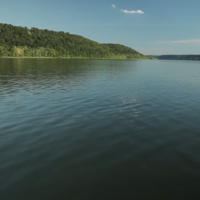Gardening is changing. Last fall, the U.S. Department of Agriculture released an updated plant hardiness zone map that shows which plants do best in which parts of the country. About half the country was moved into a warmer hardiness zone, reflecting our climate change reality.

The map update puts to paper what farmers and gardeners across the country have been noting for more than a decade now: summers are on average getting hotter and drier. Extreme weather events like heat waves or flooding are also becoming more common, according to climate scientists, which means that even if you’re now technically able to grow warmer-weather plants, you’re still contending with extreme weather that could put stress on your garden. In other words, an early cold snap could kill those lemons you were so excited might finally grow in your hardiness zone.
This new map also reflects the effect of growing metropolitan areas where pavement and buildings absorb more heat than rural areas, according to researchers from the University of Washington. You can see this play out in my corner of Oregon, where the farther outside of the Portland metropolitan area you go, the later the average last frost date is.

To me, this shows how essential it is to pay attention to your specific locale.Take my mom, for instance: she’s in a small suburb outside of Portland where 100-foot trees line her property and deer the size of elk (her words) strut across her front lawn, gnawing on every alleged “deer resistant” plant in sight. She’s had to adapt to a shady yard with voracious herbivores. She grows a lot of potted tomatoes that she can position in the spots of sun that speckle the fenced part of her yard, away from the deer. Her plants are well-hydrated thanks to the enormous trees that keep temperatures at her house 10-15 degrees cooler than less vegetated parts of town during the hottest parts of the year.
In contrast, at my house in southeast Portland, there are miles of paved road and nary a tree in sight. During the peak of summer, temperatures can reach over 100 degrees Fahrenheit and feel like 100 degrees, and you can imagine how unhappy that makes my plants. I grew up in a desert where water conservation is second nature, so the idea of watering during the hottest weeks of summer is a total contradiction in my mind.
This year, I’ve decided I won’t be gardening in late summer because of this. My gardening season will be from late March to early July, and anything that survives past then? I’ll take note of it for next year, but I’m not going to fret over which plants I did and did not keep alive while we (me, my plants, and I) were fighting for our lives inside an urban heat island. To use the words of Ifeoma Ozoma from this wonderful interview about gardening in New Mexico, “…[I] believe that anything planted in the ground that can’t survive without assistance after it’s established isn’t meant to be planted here.”
The new hardiness map is a good jumping-off point for gardeners, but paying attention to how specific plants respond to the different soil types in your yard or knowing which of your window sills is ideal for perching an oregano plant on is the best way to set yourself up for success. The more local your knowledge, the better.
And as the climate continues to warm, bracing ourselves for – and adapting to – the changes that come with it is going to be essential. On the plus side, maybe someday I actually will be able to grow lemons in Oregon.
This article first appeared on The Daily Yonder and is republished here under a Creative Commons license.






